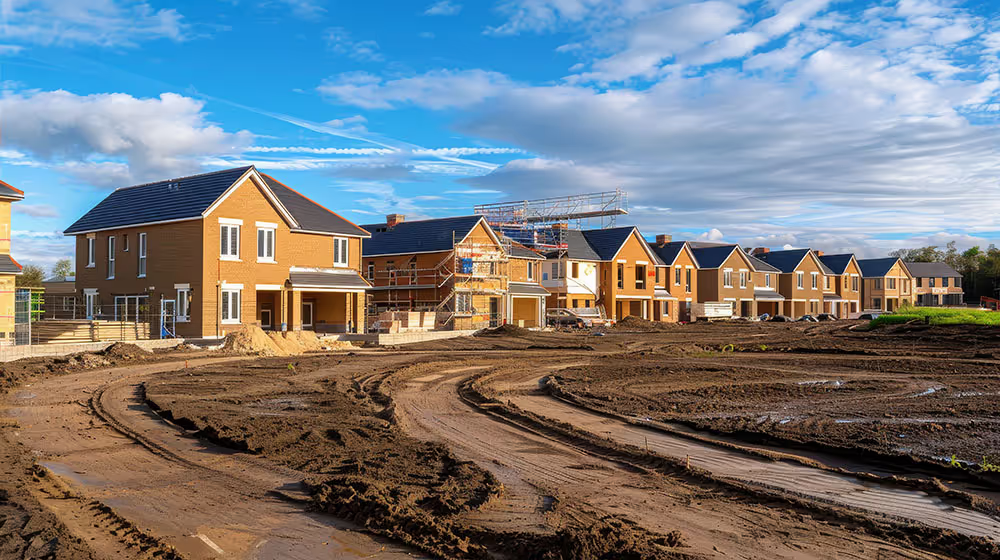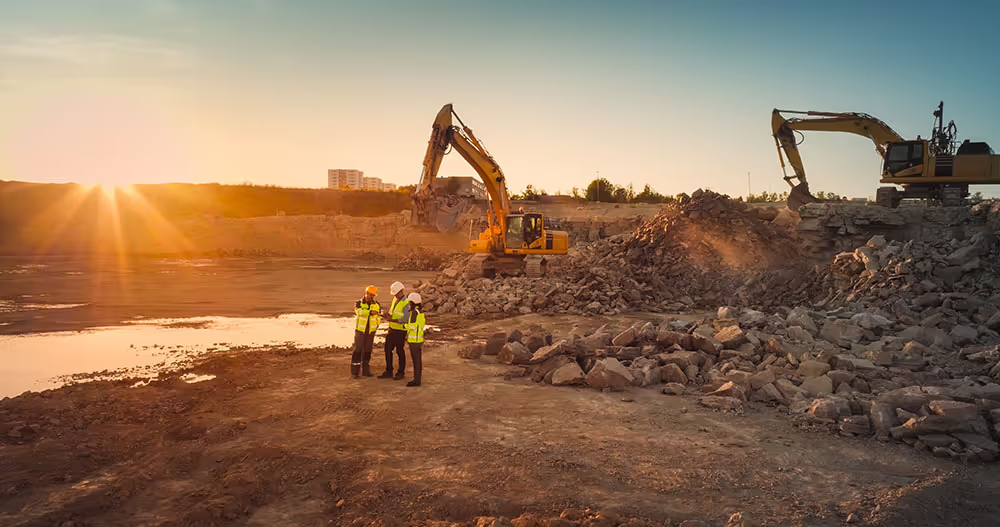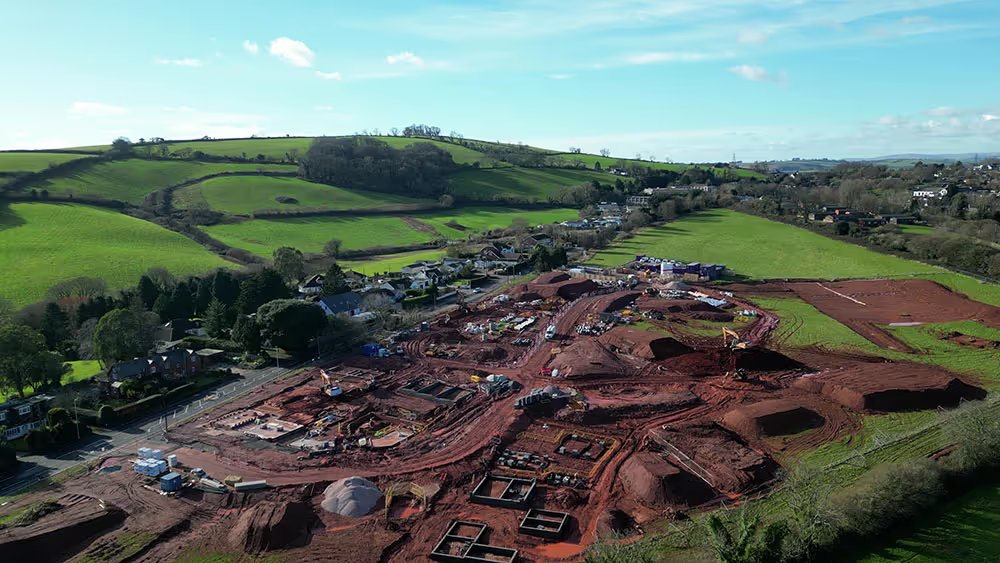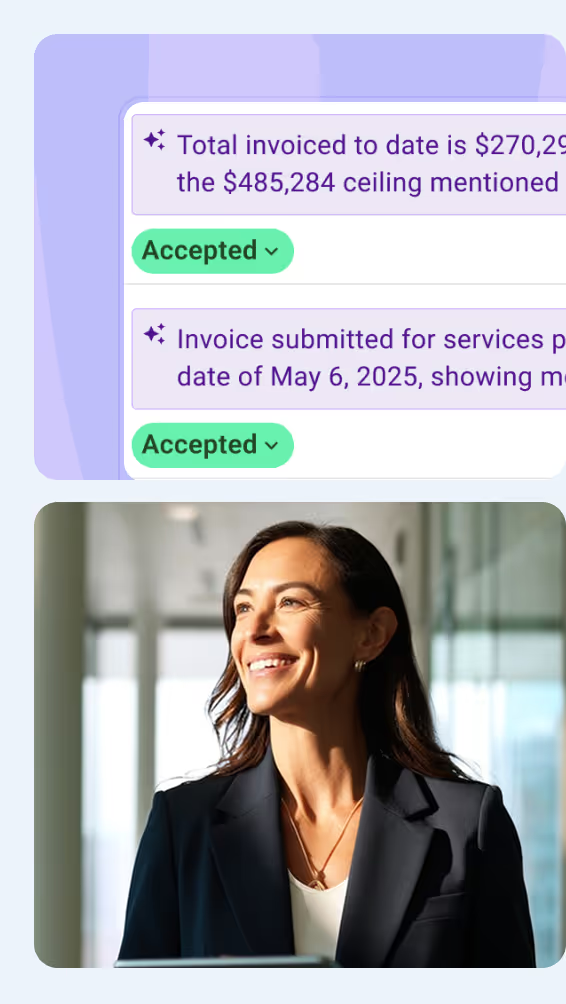Property development project management aligns real estate projects from early feasibility through to asset handover. It focuses on delivering the asset, while property management takes over post-completion for leasing, maintenance, and operations.
In this guide, you’ll learn the essential steps project managers take to define scope, manage teams, control costs, and reduce risk. These practices apply to both new builds and redevelopment projects involving upgrades, rezoning, or site reuse.
1. Define the Property Development Project Lifecycle Early
Defining the full lifecycle upfront helps project managers align strategy, consultants, and compliance from day one. It reduce risks across feasibility, design, planning approvals, procurement, and construction delivery.
Below is a breakdown of core stages in property development project management and their key functions:
A strong lifecycle structure keeps development moving, from acquisition through construction to occupancy. Without it, you risk blown budgets, missed approvals, and failed outcomes.

2. Set Scope, Budget, and Approvals
The early definition of scope, cost framework, and authority path significantly shapes how a project proceeds and performs. It prevents costly revisions and misaligned expectations down the track.
To ensure aligned approvals and financial clarity, project managers should:
- Confirm the development type, land use mix, and total floor area.
- Set target yield, building height, and density based on zoning or site constraints.
- Define staging, deliverables, and coordination milestones for consultants.
- Build high-level cost forecasts, contingencies, and funding triggers.
- Engage planning advisors to map permit steps, zoning codes, and approval risks.
Clarity in scope and funding allows consultants to proceed without redesigns or misaligned outputs. It also improves approval accuracy, reducing the number of review rounds and planning setbacks.
3. Build a Realistic Development Program With Linked Milestones
A milestone-driven schedule keeps property development aligned from zoning to final turnover. It ties project pace to actual authority, procurement, and delivery constraints.
Use these steps to build a schedule that supports approvals, contractor readiness, and investor confidence:
- Secure land use and planning clearance by validating overlays, site constraints, and permit timeframes.
- Complete design packages with coordinated consultant inputs and lender-ready documentation.
- Obtain all construction permits by aligning submissions with local authority timelines and tracking conditions.
- Procure contractors with clear scope and timing, finalizing contracts with milestone and risk terms.
- Track construction progress against milestones, linking payments, updates, and funding to verified outputs.
This structure links tasks to real deadlines and funding triggers. It helps prevent delays and cost blowouts.
4. Coordinate Consultants With Clear Roles and Deliverables
Precise coordination of consultants is essential to prevent costly delays in property development projects. Each consultant must understand their role and deliverables to align with project goals and approval timelines.
The table below breaks down key consultants, their primary responsibilities, and how their outputs fit into the development process.
Consistent communication and early briefing help keep consultants focused on critical deliverables. This coordination reduces rework and improves project timing, project cost control, and regulatory compliance.
5. Structure Approvals in Your Property Development Project Timeline
Authority approvals shape project viability and delivery readiness. Managing them as fixed milestones supports predictable progress across each property development phase.
Key approval types in property development project management include:
- Planning or Zoning Approval: Confirms land use, overlays, and permissible development mix. It defines the initial site strategy.
- Building and Construction Permits: Validates design against code and allows works to commence legally.
- Utility and Infrastructure Consent: Secures coordination of water, sewer, power, and road services across agencies.
- Environmental Impact Reviews: Assesses flood, heritage, traffic, and contamination conditions tied to planning.
- Subdivision or Strata Title Approval: Registers legal titles and enables sales, leasing, or refinancing.
Project managers must sequence these steps, assign responsibilities, and embed timeframes into the development program. Accurate tracking helps avoid late-stage delays and protects delivery outcomes.
For example, the Green Square Urban Renewal project in Sydney required detailed environmental and subdivision approvals, significantly shaping its timeline.
6. Secure Contractors with Scope and Risk Control
Securing contractors through a proper procurement approach ensures budget certainty and delivery control. Property development project managers must balance cost, risk, and accountability when selecting contract types to ensure optimal project outcomes.
Here’s a breakdown of common contract types used in development projects:
- Lump Sum (Fixed Price): Contractors commit to a total price based on completed documentation. It's best for well-defined scopes but limited flexibility if changes arise.
- Design and Construct (D&C/Design & Build): One contractor handles design and build, reducing interface risks. This speeds up delivery, but can reduce design visibility or control.
- Construction Management (CM/CM-as-Agent): The developer pays a fee to manage trades under separate contracts. This contract type allows flexibility and transparency, but shifts cost risk to the owner.
- Guaranteed Maximum Price (GMP): Hybrid where the builder bears cost overruns beyond a cap. It protects against blowouts, but requires strong documentation and negotiation.
Choose a model that matches your project’s complexity, risk appetite, and design certainty. Align scope, responsibilities, and milestone expectations in all contracts to avoid costly disputes.

7. Track Cost, Commitments, and Change Orders in Real Time
Real-time financial oversight helps property development project managers avoid budget creep and funding delays. Development reporting should capture not just spend, but full cost exposure across the project lifecycle.
The actions below help project managers implement effective cost control in property development projects:
- Break down cost by budget, forecast, committed, and actual: Track each category to understand cash flow, risk, and funding requirements.
- Allocate contingency against known risks and change order triggers: Use structured approval workflows to monitor drawdown and protect capital buffers.
- Manage consultant claims, scope changes, and invoices according to contract: Log and validate changes with supporting documentation and delivery status updates.
- Use cost management software for live reporting and control: Automate cost updates, burn rates, and approval workflows using purpose-built platforms.
Precise financial tracking keeps stakeholders aligned and supports timely, data-driven decisions. Missed visibility here can derail both the program and profitability.
8. Hold Monthly Reviews for Progress, Risk, and Reporting
Monthly reviews are essential in property project management to maintain control over delivery, cost, and compliance. They provide structured updates to investors, consultants, and internal teams.
Below is a breakdown of key areas covered in effective monthly property project management reports:
Consistent reporting in property development keeps stakeholders informed and supports faster decisions. It also builds trust across the lifecycle of every project.
9. Align Property Delivery With Exit and Closeout Outcomes
Project managers must align delivery programs with handover, settlement, and sales timelines from the start. This approach ensures exit strategies and revenue events stay integrated into construction and closeout planning.
Key delivery-closeout actions in property development include:
- Define the sales or leasing timeline early: This ensures construction aligns with campaign launches, settlement periods, or tenant fit-out dates.
- Establish your handover and defects closeout process: Create a defects list, manage rectifications, and prepare for occupancy certification and title registration.
- Coordinate finance, legal, and compliance closeout tasks: Finalize valuations, funding drawdowns, strata setup, and asset documentation.
Factoring in exit strategy timing keeps revenue release and operations aligned with final works. It also prevents last-minute delays that can disrupt settlements or drawdowns of financing.

10. Use Software Built for Property Development Management
Generic tools can’t support the complexity of large-scale real estate developments. A purpose-built property development software help project managers align costs, workflows, and compliance throughout the entire project lifecycle, from feasibility to handover.
The following are the key capabilities to look for in property development software:
- Progress milestone tracking: Monitor feasibility, approvals, construction, and closeout in real time using dashboards.
- Integrated cost control: Compare budget, forecast, committed, and actual costs to avoid overrun.
- Automated approval workflows: Coordinate planning submissions, condition tracking, and compliance signoffs faster.
- Centralised document management: Manage versioned drawings, reports, and permits across consultants and contractors.
- Stakeholder reporting tools: Generate project status, risk summaries, and investor-ready performance visuals.
Tools like Mastt give complete visibility into each phase of a property development project management. They reduce delays, improve team alignment, and simplify decision-making at scale.
Make Property Development Project Management Your Strategic Advantage
Property development success depends on how boldly a project manager leads. Every decision is a lever that either unlocks momentum or slows progress.
Treat every approval, dollar, and milestone as a strategic move. With the right mindset and tools, you shape not just the project, but the market around it.


















